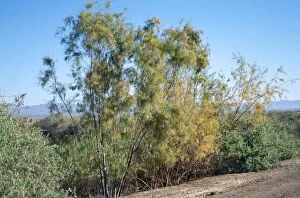Tamarisks Collection
Discover the enchanting beauty of the Tamarisk tree (Tamarix spp.) by the sea in Chios, Greece (Picture No. 10755105
All Professionally Made to Order for Quick Shipping
Discover the enchanting beauty of the Tamarisk tree (Tamarix spp.) by the sea in Chios, Greece (Picture No. 10755105). Originally native to Asia and Southeastern Europe, this tree was introduced to the USA and Europe as an ornamental plant. In its new habitats, it has become an invasive alien species, thriving at the edge of beaches in places like Bembridge, Isle of Wight, England (June). The grey heron (Ardea cinerea) finds refuge in its branches at Saintes Marie de la Mer, Camargue, Bouches du Rhone, France. However, its invasive nature can also be seen in its dominance over dry riverbeds in the Southern Desert, Iran, and the dunes of White Sands National Monument, New Mexico, USA, causing a solid block around its roots and disrupting native ecosystems. Behold the paradox of this captivating yet invasive tree.










